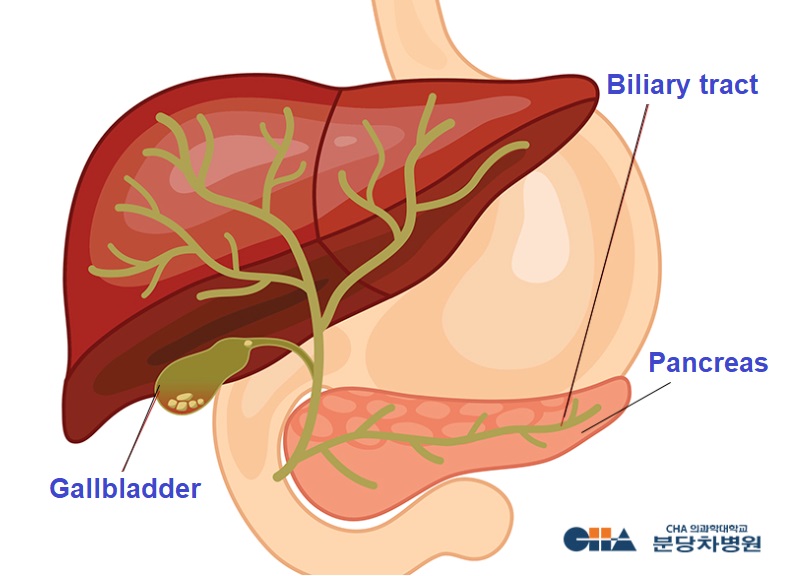[MAY. 2022] Success of Surgical Treatment of Diffuse Cholangiocarcinoma
- Name 관리자
- Date 2022-05-24
Success of Surgical Treatment of Diffuse Cholangiocarcinoma By World’s First Resection of Liver-Pancreatic Head-Duodenum Through Robotic Laparoscopy
A new clinical skill of robotic laparoscopy was opened by one of the hardest surgeries-simultaneous resection of liver-pancreatic head-duodenum
A team led by general surgery Dr. Choi, Sung Hoon, has succeed to remove the cancer by simultaneous resection of liver-pancreatic head-duodenum on cancer patient who had diffuse cholangiocarcinoma and metastasis on liver and pancreas for the first time in the world. In the surgical field, it is one of the hardest surgeries to resect the liver and pancreas at the same time. Therefore, it led a big issue to be published in Journal of Gastrointestinal surgery which is one of the influential international journals in surgical field.
Surgeries were done on 2 patients with diffuse cholangiocarcinoma each in 2018 and 2019 without recurrence or complications
Dr. Choi, Sung Hoon’s team performed simultaneous resection of liver and pancreatic head-duodenum through robotic laparoscopy to 2 patients with diffuse cholangiocarcinoma each in October 2018 and February 2019. ‘Resection of pancreatic head-duodenum’ means it is to resect duodenum that is connected with pancreatic head, biliary tract and gallbladder at the same time and it is one of the hardest surgeries. Eventually, the patient A (73 years old) had surgery successfully and after 13 months of follow-up, he was staying healthy traveling and enjoying the hobby without recurrence or complications. The other patient B (59 years old) was also enjoying the life after surgery and chemotherapy.
The right time of surgery is decided by multidisciplinary care for cholangiocarcinoma
The biliary tract is a long organ from liver to pancreas and it sends bile juice that helps to digest- which is made in liver- to the duodenum through pancreas. The treatment plan and success rate of full recovery depend on the location of tumor and the extent of invasion because there is a significant blood vessel that meets surrounded part of biliary tract. The goal of the current surgery of cholangiocarcinoma is to heal completely, however, it is only 30-40% who is appropriate for the surgery among the patients with cholangiocarcinoma.
Especially, since the diffuse cholangiocarcinoma spreads like a line from top to bottom, simultaneous resection of liver and pancreatic head-duodenum is mostly required. The complication of postoperative rate is high, so laparostomy is usually performed. However, laparostomy requires a long recovery period and it is likely to be delayed to start additional treatment after surgery, so the necessity of minimally invasive surgery was always brought up.
Since it is very important to find the right timing for the minimally invasive surgery, it is essential to have multidisciplinary care with various departments, such as general surgery, radiology, gastroenterology, hemato-oncology, radiation oncology, pathology, etc.

